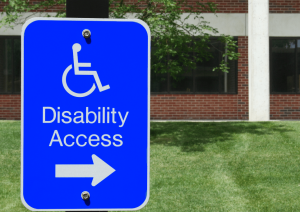
By Scihealthhub – October 21, 2024
I’ve encountered two very different scenarios while navigating public spaces in my wheelchair.
In one instance, as I was moving along independently, a well-meaning passerby assumed I needed help and suddenly began pushing my wheelchair without asking for my consent. I was startled.
In another instance, I was struggling to ascend a steep ramp, with my wheelchair momentarily stuck. A passerby noticed my difficulty, approached me, and politely asked, “Do you need any help?” I gratefully accepted their offer, and with their assistance, I successfully made it up the ramp.
Which of these two scenarios do you think reflects proper disability etiquette for a wheelchair user?
In our society, understanding how to interact with people with disabilities, including wheelchair users, is imperative. According to the World Health Organization (WHO), more than 80 million people worldwide use wheelchairs, representing about 1% of the global population.
This critical mass of people shares the same needs as everyone else, with the most important need being to be treated with dignity and respect.
Disability etiquette refers to guidelines for interacting with people with disabilities in ways that respect their dignity and individuality. This article provides practical tips on how to interact with wheelchair users respectfully and considerately.
1. Always Speak Directly to the Person, Not the Wheelchair
One of the most important rules of disability etiquette is to address the wheelchair user directly. Avoid speaking to their companion, caregiver, or standing behind them while talking. Instead, communicate face-to-face whenever possible. If the conversation is prolonged, find a seat so you can be at eye level with the person.
Key Tip:
Eye contact is essential as it shows you are engaging with the person as an equal.
2. Ask Before Providing Assistance
It may be tempting to offer help when you see a wheelchair user in a challenging situation, but it’s essential to ask first. Wheelchair users often value their independence, and unsolicited assistance can feel intrusive or unnecessary. Asking “Can I help you with that?” shows respect for their autonomy.
Key Tip:
Respectfully ask before offering assistance. If help is declined, accept it gracefully without insisting.
3. Respect Personal Space, Including the Wheelchair
A wheelchair is not just a mobility aid—it is an extension of the user’s personal space. Leaning on or touching someone’s wheelchair is as inappropriate as leaning on them. Always respect this space, and if you need to move the wheelchair, ask for permission first.
Key Tip:
Consider the wheelchair an integral part of the individual. Don’t lean on it or push it without asking.
4. Mind Your Language: Terminology Matters
The words we use can either empower or marginalize. When interacting with wheelchair users, it’s important to use respectful language. Avoid outdated or offensive terms like “confined to a wheelchair” or “wheelchair-bound.” Instead, use phrases like “person who uses a wheelchair” or “wheelchair user.” This shift in language focuses on the person, not the disability.
Key Tip:
Use “people-first” language, which emphasizes the individual before their condition.
5. Avoid Making Assumptions About the Person’s Abilities
Don’t assume that because someone uses a wheelchair, they need help with everything or are unable to perform certain tasks. Many wheelchair users are perfectly capable of living independently and managing their day-to-day lives. Before assuming limitations, it’s always best to ask the person about their preferences or needs.
Key Tip:
Focus on the individual’s strengths and capabilities, not their disability.
6. Engage in Meaningful Conversations, Not About Their Disability
While curiosity is natural, it’s important not to make the wheelchair or the person’s disability the focus of the conversation unless they bring it up. Just as you wouldn’t ask someone without a disability about their medical history in casual conversation, extend the same courtesy to wheelchair users. Engage in discussions about common interests, hobbies, or current events.
Key Tip:
Treat them as you would treat anyone else—discuss their passions, work, or other interests.
7. Accessible Environments: A Key to Inclusion
Understanding how wheelchair users navigate their environment can enhance your interactions with them. Ensuring that events, meetings, or social gatherings are wheelchair accessible is not only courteous but necessary. This includes access to ramps, wide doorways, and appropriate seating arrangements.
Key Tip:
Always plan ahead to ensure accessibility, and ask for feedback on how you can make events more inclusive.
8. Avoid Unnecessary Pity or Sympathy
People with disabilities, including wheelchair users, are not looking for pity or sympathy. While compassion is important, excessive sympathy can feel patronizing. Instead, focus on treating wheelchair users with the same respect, dignity, and warmth you would extend to anyone else.
Key Tip:
Be empathetic, but avoid pity. Avoid statements like “I can’t imagine what you go through,” as they can feel alienating.
9. Be Patient and Understanding
Every individual moves at their own pace, and this can be especially true for wheelchair users navigating different environments. Whether it’s maneuvering through a crowded space or adjusting their seating position, it’s important to be patient. Avoid showing frustration or impatience if things take a little longer than expected.
Key Tip:
Give the person time and space to handle situations in their own way. Maintain a positive attitude.
10. Promote Inclusivity Through Education and Advocacy
Inclusion is not only about individual interactions with wheelchair users but also about advocating for a more accessible world. Take the time to educate yourself and others on disability rights and accessibility standards. By advocating for inclusive practices in your community, workplace, and public spaces, you help create a more just and respectful society.
Key Tip:
Get involved in advocacy campaigns for better accessibility and work to dismantle barriers that limit full participation for wheelchair users.
In conclusion, disability etiquette, especially when interacting with wheelchair users, is about respect, dignity, and inclusion. The tips in this article will help ensure that our interactions with wheelchair users are respectful and considerate, contributing to a more inclusive and equitable society.





